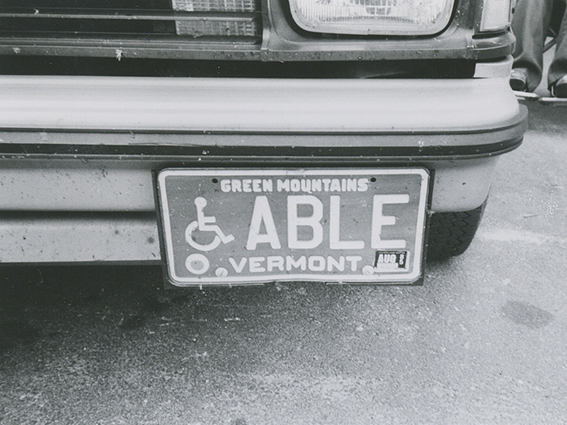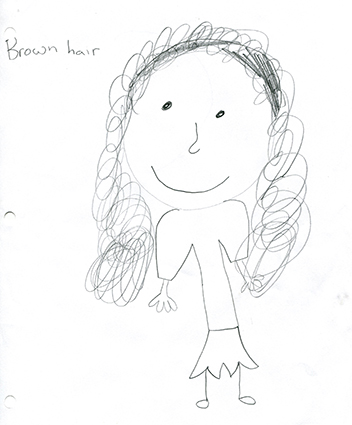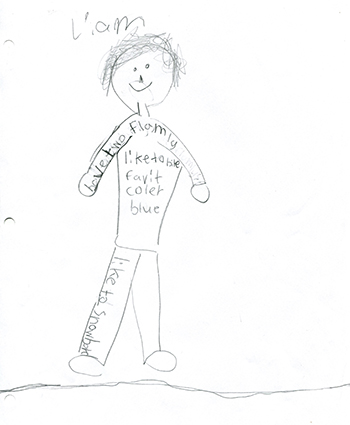
Overview
Students fill out a values questionnaire and participate in an interactive movement activity in which they identify and discuss how common social values (love, food, work, tradition, education, social justice, etc.) affect their family life and personal choices. The follow-up class discussion and supplemental activity offer students a time to assess how social and family values can create either acceptance or conflicts regarding our own and others’ abilities and disabilities, gender roles, other diversity issues and individual interests and life choices.
Identity and Belonging Focus: Disability and Diversity.
Grade(s): 7 to 12.
Subjects: Social Studies.

Learning Objectives
Identify the values that are important in the student’s family and be able to describe why they are important and how they affect their personal values and choices.
Recognize the ways in which people from diverse backgrounds and family cultures can share common concerns and interests.
Understand the reasons for value choices that are different from their own.

Standards
Come to understand other perspectives and cultures through reading, listening and collaborations.
Obtain, evaluate and communicate information.
Engage effectively in a range of collaborative discussions (one on one, in groups and teacher-led) with diverse partners on grade level topics, text and issues, building on others’ ideas and expressing their own clearly.
Acknowledge new information expressed by others, and, when warranted, qualify or justify their own views in light of the evidence presented.

Materials
Values questionnaire as homework or first class activity: Make copies of values questionnaire ready for homework or for first class activity.
Print out a copy of the set of individual values sheets for this class activity (see attached).
Review scenarios below and add others as appropriate.
Time: Two 40-minute sessions. If necessary, the lesson can be broken into four 20-minute sessions.
Setting: Classroom with tables and chairs moved out of the way to allow students to move around in a large circle.

Directions
Introducing the Lesson: Sometimes we talk about things as being valuable because they are worth money or have financial value, but people also have other reasons for giving ideas or things importance or high value. Values are social activities, beliefs or resources that an individual or group of people regard as important. Personal and social values influence individual and community decisions and help shape our lives.
Tell students we are going to explore our own personal and family values—the ideas, expectations and behaviors that guide us as individuals and those that are important in our home and family life. Go over the definition of a value or values. Ask students to think of examples of the ideas or kinds of things that are important to them.
Activity 1: Family Values Worksheet and Values Exercise
Hand out the Family Values Worksheet and go over the list of values to make sure everyone is familiar with the words on the list. Ask people to take five minutes to fill out the worksheet, marking the priority order for their families (on the left side of the word) and then for themselves (on the right side). This can be done as homework or in the previous class or can be done as an opening activity.
Use the 10 value sheets included with this lesson or create your own by writing each one on a large sheet of paper. Spread these out on the floor in a large circle, with plenty of room for students to gather around them. Ask students to move to the number 1 value for their family. Students will find themselves at different places in the circle and some will find that they have chosen the same number 1 family value. Ask each of the students who chose that value to say why they chose it. Do the same thing with the number 2 and (if time allows) number 3 family values so that students can talk about how and why these values are important in their family life.
Bring the students back together and ask them to do the same exercise using their personal value ratings: Explore their number 1 and 2 personal value and why there were chosen. If there is time, go on to their number 3 personal value. Ask students whether their personal values are the same or different from their family values. Why or why not?
Activity 2: Telling our Stories
Introduction: Briefly review the Family Values activity and ask students to share the ideas and feelings it raised. Discuss with students why it might be helpful to understand your personal and family values: Ask them if they have ever found themselves angry or upset with themselves, a family member, or with someone else because of a conflict in values. These feelings can be easier to cope with when we realize why it is happening. It is natural that individuals and families have different priorities and goals. For example, some families value family traditions and connections more than independence; some put a strong emphasis on work or education; some have different expectations for boys than girls. Sharing religious practices, social gatherings or meals are important in some families and is not expected in others. Things like food, jobs, education or social justice may symbolize other things that are important to some families and cultures: security, health, success in caring for the people you love, or service to the community around you.
Here are some short scenarios to start a conversation:
Tradition/Religion: Jon shares his family’s strong religious faith and has a hard time understanding people from other religious traditions, while Mari no longer believes in her family’s tradition and has a hard time respecting people who do.
Gender Roles and Disability: In Lynn’s family, girls are expected to run the household and take care of children, and sons are expected to help run the family businesses or go to college. Lynn loves to study and her brother doesn’t. He has trouble with reading and numbers and likes music and performing much more than traditional jobs.
Independence: Petra has cerebral palsy. Her family feels that they must take care of her and are not sure she will ever be able to do things for herself. She sometimes is asked to stay in her room when company comes. She has her own dreams of having a family and going on to college.
Work: Stephanie is from a single-parent family. Her parent had to hold down two or three jobs to pay the bills and Stephanie and her brother both grew up doing jobs around the house and also working for extra money for the family. Stephanie has recently been diagnosed with diabetes and is afraid she won’t be able to carry her share of the family responsibilities.
Ask students to identify the values conflict in each story and what are some ways to address the conflict that respect the interests and dignity of the different people involved.
Supplemental Activity
Social Values Worksheets
Follow-up Writing or Art Activity: If there is time or for homework, ask students to write their thoughts and observations in their personal journal. What did they learn from this exercise: How are their own values similar to or different from their family’s values? Were they surprised about the similar or different values and interests within the class? Students could draw or paint images from this exercise or create artwork to show the values that are most important or interesting to them.
Ask students to hand in or bring their filled-in values activity sheet and journals for review and discussion.
We often think that dominant values are common in a particular society or true for everyone, but cultural beliefs and values vary across cultures and among families. Independence may be valued in one society while another society may value behavior that helps others in the family or social group. The dominant values and beliefs worksheets included with this lesson allow students to compare their own values with ones that are common or dominant is some cultures. Students should do them on their own and then discuss them in small groups. What commonalities and differences do they find between their own values, the values of others in their small group and the dominant values highlighted in this questionnaire?
The Family Values activity used in this lesson was developed by Susan Yuan:
Yuan, S. 2010. Family Support, Culture and Disability. Washington, DC: TASH. Developed with funding from the Administration on Developmental Disabilities.